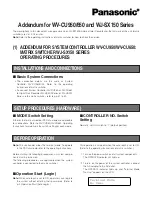
Siemens LV 10 · 2004
7/28
Fuses and Fuse Systems
Introduction
7
■
Overview
Applications
Applications for fuses range from installation systems in residen-
tial buildings, non-residential buildings, trade and industry
through to switchgear installations of the utilities.
Fuses protect cables and conductors against overload and
short-circuit currents.
They are also suitable for protecting equipment and devices,
such as
• protecting motors during temporary overloads resulting from
the operating mode
• or short-circuits that occur occasionally.
They protect people in the event of a fault against impermissible
touch voltages in TN and TT networks.
They are used as back-up protection for miniature circuit-break-
ers and residual-current operated circuit-breakers. The high de-
gree of discrimination guarantees optimum protection in radial
and grid networks.
Fuse systems
Low-voltage fuses up to 1000 V fall into the following categories:
• Fuse systems that can be operated by non-specialists, such
as:
NEOZED
and
DIAZED
, which are designed to prevent mis-
takes regarding the nominal current and which provide protec-
tion against touch.
• Fuse systems that must only be operated by the specialist,
such as:
LV HRC fuses
which do not have to be designed to prevent
mistakes regarding the nominal current and which do not need
to provide protection against touch.
Sizes
The sizes of low-voltage fuses and, for example, the non-inter-
changeability for operation by the non-specialists are defined in
DIN VDE 0636.
• NEOZED fuses are available in sizes D01, D02 and D03
• DIAZED fuses are available in sizes E 16, DII, DIII and DIV
• LV HRC fuses are available in sizes 000, 00, 0, 1, 2, 3, 4 and 4a
Operational classes
The operational classes of low-voltage fuses are defined in
IEC 60269. Operational class gG is defined for cable and line
protection.
According to DIN VDE 0636, cable and line protection was pre-
viously designated as gL, now gG is also applicable. During the
transition period, for the sake of clarity, gL/gG is specified in the
catalog.
The operational class aM for switchgear protection in the short-
circuit range is defined identically in IEC 60269 and
DIN VDE 0636.
Planning, characteristics
Detailed information and characteristics are available for plan-
ning purposes on the Internet at
www.siemens.de/installationstechnik
.
■
Technical specifications
NEOZED
DIAZED
LV HRC fuses
SITOR
Cylinder
fuses
Standards
DIN VDE 0636
DIN VDE 0680
IEC 60269
EN 60269
DIN VDE 0635
DIN VDE 0636
DIN VDE 0680
IEC 60269
IEC 60241
CEE 16
EN 60269
DIN VDE 0636
DIN VDE 0680
IEC 60269
EN 60269
DIN VDE 0636
IEC 60269
EN 60269
IEC 60269
NF C 60200
NF C 63210
NF C 63211
NBN C 63269-
2-EN-2-1
CEI 32-4
Dimensions
DIN VDE
49522
DIN VDE
49523
DIN VDE
49524
DIN VDE
49525
DIN VDE
49510
DIN VDE
49511
DIN VDE
49514
DIN VDE
49515
DIN VDE
49516
DIN 43620
DIN 43620
DIN 43623
IEC 60269-2-1
Operational classes
gL/gG
gL/gG, gR
slow, quick
gL/gG, aM
aR, gR
gG, aM
Rated voltage
AC V
DC V
400
250
500/690/750
500/600/750
500/690
250/440
600/690/1000
400/500
Rated current range
A
2 ... 100
2 ... 1250
16 ... 630
0.5 ... 100
Rated breaking capacity
AC kA
DC kA
50
8
50,
40 (E16),
8,
1.6 (E16)
120
25
> 50
Mounting position
Any, but preferably vertical
Climatic stability
°C
up to 45
at 95 % rel. humidity
-30 ... +50
at 95 % rel. humidity
up to 45
at 95 % rel. humidity
Non-interchangeability
Due to gauge pieces
Due to gauge screws Not necessary
















































